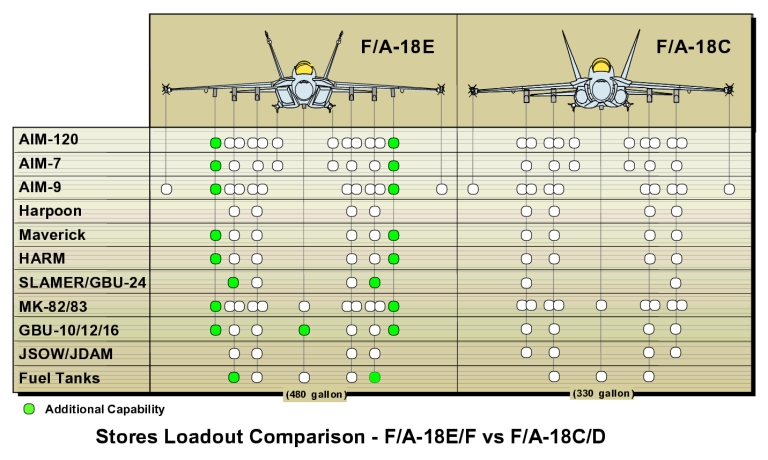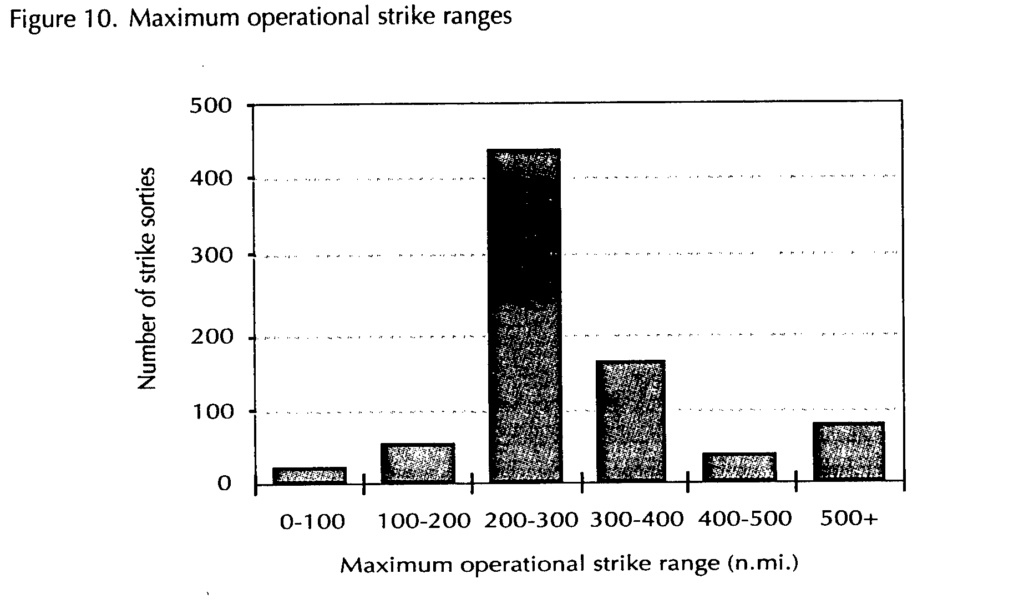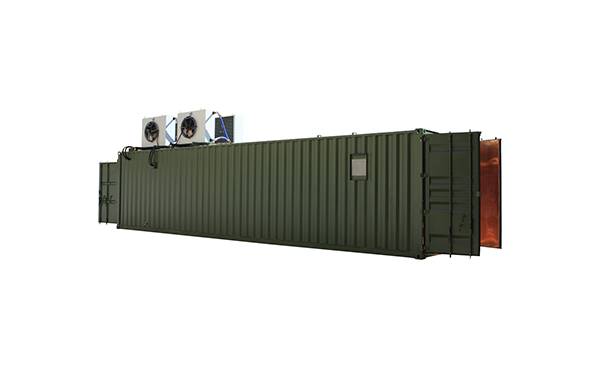@Mindstorm:
I continue with my answers where I left it in my last post
I agree that it is absolutely not reasonable, because in the reality those carriers would almost certainly operate at thousands of km from CONUS in closed sea theatres (Baltic, Mediterranean Sea, Black sea, Persian Gulf etc....) and at only some hundreds of km from enemy EEZ, where would be trapped within engagement range even of coastal-batteries of enemy antiship missilse ,let aside ship and submarine mounted ones, and theirs weapon load would be constituted at 85-90 % of air to ground and air to air ordances ,not anti-ship missiles.
The US concept of operations of carriers (namely, pretending that they can use them directly against the territories of peer nations) does not make much sense, and increasingly less as more and more advanced AShM appear. In any case, despite their rethoric, in real world they take big precautions before sailing with their CSGs into closed seas where attack vectors are less predictable, enemies can be at sea, littoral and land, and reaction times are reduced.
Nevertheless, any fleet operating in such closed seas is going to suffer that kind of risks. I think it is more a discussion about using a capital-ship based fleet or not, not about carriers specifically.
The scenario chosen is the most favourable for the "perpetual-retreat" tactic ,that obviously would be irrealizable in reality because no technology capable to change wind direction exist today and at speed of over 20 knots in a forced direction it would be absolutely impossible to execute any take-off (above all with that weapon and fuel load) except with almost perfect cross wing direction.
But i have assumed, for pure sake of argumentation, that the wind's direction would perfectly match the directions where enemy group of ships alternatively pull the carriers.......admitting that the carrier would be even aware that a group of those low tonnage ships would be coming toward it in a particular direction ,models now existing suggest the opposite.....
The approach vector of the frigates depends on the starting conditions. I consider it reasonable to assume that the carrier group would not start completely surrounded and without room for movement. It has the full advantage in open seas, so why not use it? In fact, the question is how long a fleet composed by small displacement ships can pursuit a CVN than can sustain 30+ kt indefinitely. The USN RFI for the FFGX asked for 3,000 NM range @16 kts. The Italian version of the FREMM, which is the base for the FFGX, has a range of 6,800 nmi @15 kts with CODLAG propulsion, that means range at 30 kts would be a fraction of that.
As to the argument that the carrier may need a significant amount of time to sail into the wind to launch and recover planes, in the operational cycle that I calculated based on your proposed scenario, the carrier would need in the worst case to completely reverse for some minutes (5 minutes is enough to launch 18 planes if they have been already prepared, and such amount can be handled on the flight deck in parallel) and between 1 and 1:20 minutes per plane for recovery (between 18 and 24 minutes). So roughly ¼th of the time during those two hours cycle in the worst absolute case, for an effective speed of 22-23 kts (I don't know how much faster than 30 kts the carrier is in reality). FFGX is expected to be 26 kts+, so the potential close-in rate in this worst case is a bit uncertain. In order to check this in a more detailed way even, I would need to check wind over deck requirements for the given plane loads in both launch and recovery to see in what conditions this reversing of the carrier's heading may or may not be necessary, this may take a bit more of time. If the frigates would come too close, the carrier could increase the sortie interval and just recover distance. This is its choice, since the carrier aviation can threaten the frigates at long ranges but the opposite is not true.
It is interesting to consider that Russian shipbuilders have made the remark that giving an eventual VMF carrier full nuclear propulsion would be very expensive. This is the option USN took, it has the big advantage that their CVNs can sail full speed without caring about fuel consumption. But the rest of the ships in the fleet do not have that option and therefore I think that, being pragmatical, the last proposal from Krylov with CONAG propulsion would be sufficient and quite probably more economic.
The figure is for a single salvo against an insulated frigate with the defending ship using about half of its interceptors , in reality density of the most well executed salvo attack will never reach density greater than 12-13 missiles for minute and the frigates would converge in strike groups of at least 3 or 4 units capable each to cover the others, exchange data and jamming power for a significative surge of the PK of each single interceptor.
The convergence of frigates can indeed be a way of increasing the size of the salvo needed, but then one of the main advantages of the distributed fleet would disappear, since if would turn into an increasingly centralized fleet and not a distributed one, reducing the opposing side's ISR effort.
As to the AD capability of the FFGX itself, after reading more about their radars and interceptors I have to consider them not in the same category as an AEGIS DDG. I am not sure the frigate could allow itself to employ just the half of its interceptors, due to the reduced engagement time, I recalculated the radar horizon and considered some other limitations:
The radar is the AN/SPY-6(V)3: A 3-sided phased array fixed version of the EASR.
- It lacks the X band segment normally used for low target search, since it offers superior resolution and clutter rejection
- It uses only 9 RMA against 37 RMA in the case of an Arleigh Burke Flight III, for a fraction of the antenna gain and power performance
- Its altitude over the sea surface is roughly 18 m, which would result in a radar horizon of ca. 14 km against a target flying 5 m over the waves. Against a 0.9 M target that is ca. 45 seconds time, - against a 3 M target that is roughly 14 seconds or quite close to the reaction time of the ship's AD, estimated in ca. 10 seconds for an AEGIS fire control from detection to launch of the first interceptor in optimum conditions. Evaopration conditions can reduce that radar horizon to well below 10 km, which means that the system would not even have the chance to engage the incoming missile (that makes very clear IMHO why “Threat D” was assessed as critical by USN)

- Considering the beam deflection limitations of AESA technology and the lack of overlaping between the three arrays of the FFGX radar, it is questionable if the directions right at the deflection limits of the arrays are not especially vulnerable.
- A small tonnage vessel is specially subject to state of sea and therefore its radar horizon can be additionally affected due to the ship raising and sinking with the waves
- Atmospheric conditions affect through ducting the effective radar horizon, both increasing or reducing it. A serious attacker will consider this and organize their attacks when the fleet's radar field is compromised
http://cimsec.org/how-the-fleet-forgot-to-fight-pt-technical-standards/37361

- Detection of a low flying target against sea clutter is very dependent on radar grazing angles. An airborne sensor can (and actually does it in real world) change its altitude to accommodate to that reality, a surface based, fixed altitude radar cannot and that means during the approach of the missile there will be certain angles when it can be detected and times when it cannot.

- There is also a minimum engagement distance for SM missiles, not official but comparing to similar missiles like Aster a value of 3 km seems reasonable
- LRASM are specially low RCS, low flight missiles that are probably not very easy to detect for a ship's radar. That is the only way I can understand US reliance on such type of weapons.
Given all of the above as explained, I am not sure the frigates would be so effective in AD role as we are supposing until now. I cannot provide a corrected salvo size or level of effectiveness against the AShMs being considered, but it is clear to me that they are a low cost option to the Arleigh Burke and clearly a much lower-end ship overall. The cooperation of several ships would increase the amount of interceptors available but depending on the attack vector it may or may not be of help to improve detection.
An attacker relying on air power can come almost as close as they want to the fleet without airborne ISR and use even short range weapons against it. This is a fundamental asymmetry between the kind of weapons both sides need to employ in the naval strike mission (one needs high end, long range missiles while the other can employ short range, low cost ones). They can also decide when to attack, so that the environmental and tactical conditions suit them, unlike the fleet based only on surface assets.
That radar detection range is for bomber type airborne targets , detecting a surface reduced radar signature low tonnage ship on the sea clutter is all another story.....
Ships have a big RCS despite their design being optimised as of late. Regardless, detecting such vessels in the sea is going to be fairly simple even beyond the radar horizon, once they need to keep their radars permanently operating in order to detect potential incoming attacks. In active mode, the E-2D radar is capable of detecting CMs that AEGIS DDGs and CGs can not, despite being massively bigger than those in the FFGX and having also an X band component against low altitude targets.
This is very old (1983), referred to the E-2C, but it is not easy to get quantitative information about the performance of the E-2 against concrete targets. Just to show the kind of capabilities involved, even decades ago and even in case the frigates may go RF silent:
The system's surface surveillance capability is also very good, apparently the UHF band end-fire antenna mounted in the rotodome will allow the resolution of slow moving surface targets - patrol boat size vessels have been tracked beyond 100nm. https://www.ausairpower.net/AADR-E-2C-AEW.html
Sea backscatter in UHF seems to be smaller than other bands, also its resistance to weather conditions is better. That makes it good against low speed surface targets:
https://pdfs.semanticscholar.org/0f9d/d4b4b7437bcc01b3bdb04c68f0d08460d343.pdf
the 4 E-2D on board a Nimitz
Part of the advantages in flexibility of a carrier mean that the E-2 airwing can be increased. 5 planes can normally be carried, proposals using the same ships currently existing consider 6 aircraft. The airwing in a carrier is highly flexible.
in war time situations can assure, through rotation, the continual presence at no more than 100-150 n.mi from the carrier and provide guidance toward 90 degrees in the direction of propable attack of the enemy to the air wing to attempt to intercept enemy bombers.
It is a classical procedure for carrier in play since the Cold Warknown as "Outher Air Battle" ( today USN has lost the F-14 and its interception capabilities).
That configuration as you say relates to Cold War scenarios oriented towards the threat of Soviet Tu-22M3 armed with Kh-22 missiles of 250 nm range. The time on station of the E-2D would allow to keep them at way longer distances than 200 nm if needed, specially if 5 aircraft are carried instead of 4.
Time on station, 175 nautical miles from base 4 hr. 24 min
Endurance with maximum fuel 6 hr. 15 min
https://fas.org/man/dod-101/sys/ac/e-2.htm
This does not even consider the fact that in few years time the MQ-25 tanker will be available. It should allow to transfer 6800 kg of fuel at 500 nmi of the carrier, therefore more than capable of filling the tanks of the E-2 for another 6 hours on station. Hence AEW missions at extended ranges from the carrier would be easily implemented.






 Arrow
Arrow

